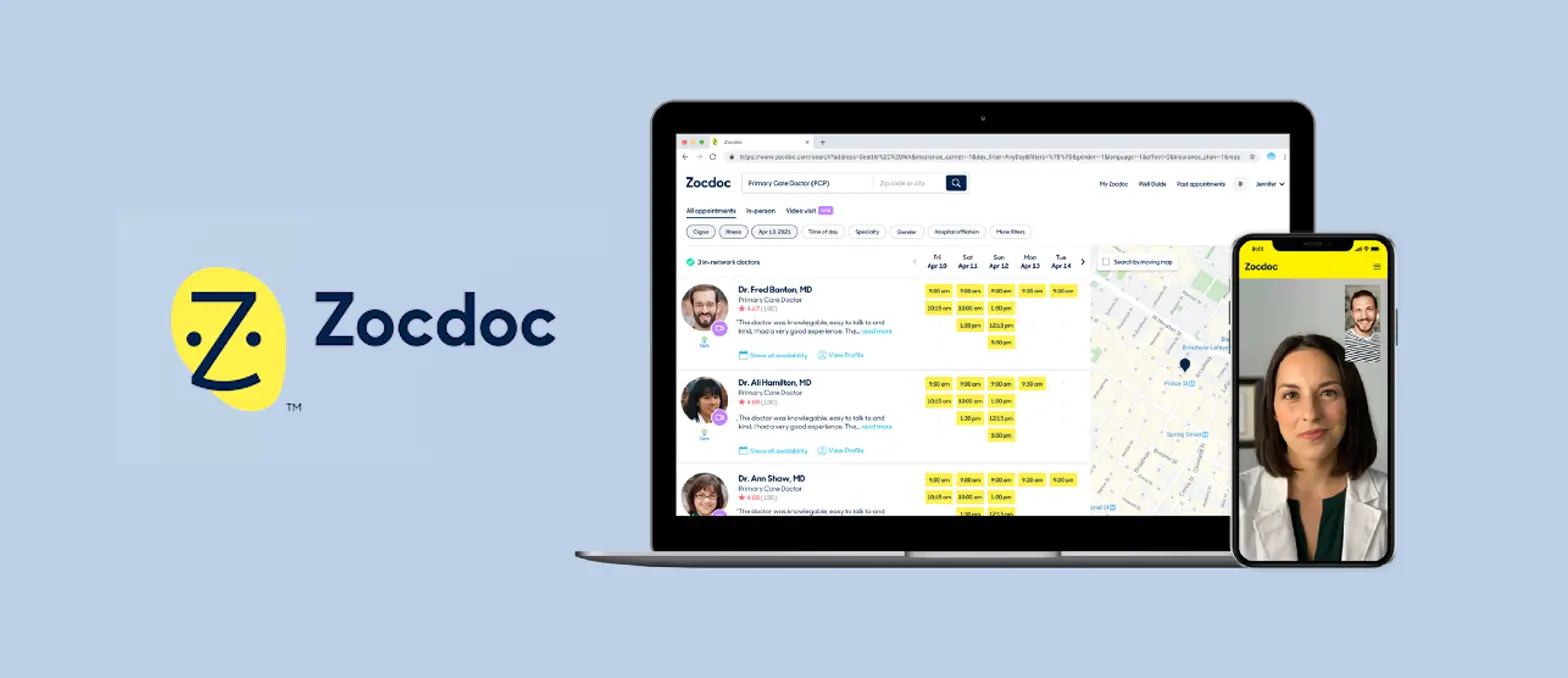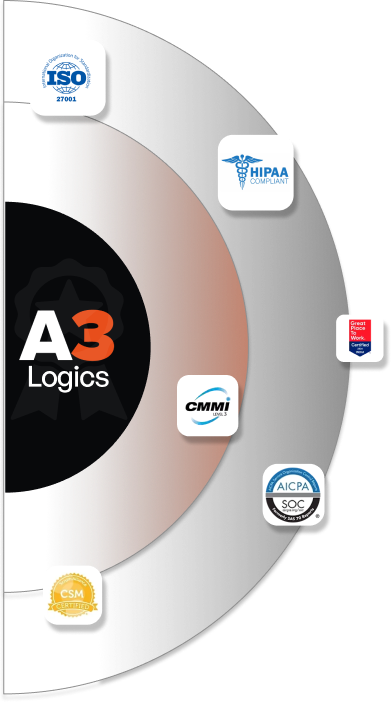Table of Contents
Music streaming apps have taken the world by storm in recent years. If you’re thinking of developing your own music streaming app, there are several important aspects to consider to ensure your success. This blog post will cover everything you need to know to get started with music streaming app development, from market research and user insights to licensing, monetization, features, and quality assurance. Follow these steps and recommendations to avoid common pitfalls and launch an app that truly meets users’ needs in this booming industry.
Importance of Music streaming apps
Music streaming applications are important for many reasons. They allow users easy access to a seemingly endless library of songs. With a streaming app, one can listen to any genre of music they want, at any time they choose.
Streaming apps have made discovering new music much simpler. Users have access to personalized recommendations that match their tastes and can explore different genres and artists they had not known about before. This exposure to new music enhances users’ appreciation for a wider range of music styles.
Streaming applications provide convenience. Users can access millions of songs instantly from their phones or other devices, without having to download or store the music files. To create audio streaming app, users can create their playlists of favourite songs and artists to listen to regularly. They can listen offline when there is no internet connection available.
Music streaming applications provide good value for the cost. Generally, subscriptions are reasonably priced for the amount of content available. Users have unlimited access to listen to any song at any time. Compared to the cost of buying individual songs or albums, streaming subscriptions are a cheaper alternative for most regular music listeners.
Most importantly, streaming apps keep music alive. They give exposure and revenue to musicians of all genres, which helps foster a thriving music community and industry. Streaming applications make music more accessible to a wider audience and expose users to new artists they would not have likely discovered otherwise. This promotes music appreciation and creativity, which enriches our lives and culture.
Growing popularity and market potential of Music streaming apps
Music streaming applications have seen rapidly growing popularity in recent years. The convenience and value they provide for users, along with the expansion of internet access and technologies, have fueled their rise. The market potential for streaming apps moving forward remains huge.
Global revenue from paid music streaming subscriptions doubled from 2016 to 2019, with estimates of over $11 billion in 2019. The number of subscribers reached over 300 million worldwide. While the United States and Europe dominate the market currently, growth in Asia and other emerging economies is projected to accelerate in the coming years.
Youths and young adults have led the adoption of music streaming app development services, which target their preferences for convenience and discovering new music online. As these demographic cohorts continue expanding globally, the subscriber base for streaming is expected to keep rising significantly over the next decade.
Technology trends point to further market gains for streaming apps. The proliferation of smartphones and other connected devices offers more platforms for music streaming. Advancements in areas like artificial intelligence and personalization capabilities will make music recommendations smarter and more relevant, increasing user loyalty and time spent on apps.
The ongoing shift of music consumption from ownership of songs and albums toward access-based streaming models indicates the market potential is far from saturated. While online piracy remains a challenge, major record labels and independent artists have largely embraced streaming as a main revenue source, which should sustain new content growth to keep subscribers engaged.
Key features and functionalities of Music streaming apps
Music streaming applications provide many useful features and functionalities for users. Access to a large library of songs is the core feature, allowing subscribers to listen to virtually any song instantly. Some of these features and functionalities of music streaming apps are as follows-
- Playlists are an important functionality, letting users create custom lists of their favourite songs and artists to listen to base on mood or activity. Playlists can be public for others to follow or view, or private for personal use only.
- Personalized recommendations help subscribers discover new music based on their listening history and preferences. Streaming apps analyze users’ playlists and songs liked to recommend similar artists and genres that match their tastes.
- Offline listening allows subscribers to download and save songs or playlists in an app to listen when no internet connection is present. This is useful for trips, commutes and other occasions when streaming data may be limited.
- Social features let users follow friends and see what they are listening to. Some apps allow subscribers to share playlists, comment on songs, and provide “likes” for other users’ musical tastes. These functions foster connections and discussions around music interests.
- Search functions enable subscribers to easily find tracks and artists by name within an app’s enormous library. Search results also provide related recommendations and options to filter by genre, mood and other attributes.
- Music quality varies across apps but many provide lossless or high-definition audio options for subscribers demanding the highest sound fidelity. Some services make immersive audio formats like Dolby Atmos and Sony 360 RA available for specific songs.
- In-app purchase options allow subscribers to obtain song downloads, concert tickets and merchandise related to artists in a streaming app’s ecosystem. This provides Music streaming apps with additional revenue streams beyond subscription fees.
Getting Started with Music streaming app development
Market Analysis
Before beginning music streaming app development, it is important to do a thorough market analysis. This involves researching the current state of the industry, competitors, target users and potential barriers. Market analysis helps determine the viability of your app idea and informs crucial decisions about features, pricing and more.
Research the size and growth trends of the overall music streaming market. Identify key statistics on numbers of users, subscribers, app downloads and revenue. Understand factors driving market growth and potential opportunities or threats going forward. This provides a macro view of your app’s potential place within the industry.
Evaluate existing Music streaming apps and identify their strengths, weaknesses, unique features and user bases. Look for potential gaps in the market your app could fill. Analyze how competitors acquire and retain users, monetize and adapt to industry changes. Learn best practices and lessons from their successes and failures.
Define your target demographics in detail based on likely user personas. Determine what needs, demands, preferences and pain points your target users have that a music streaming app could alleviate. Identify how their behaviours and attitudes differ from the general population. Tailor your app’s features and marketing accordingly.
Research potential barriers to entering the market like costs, licensing requirements, technical challenges, competition from giants and network effects favouring incumbents. Consider how you can overcome or work around these obstacles. A realistic assessment of barriers helps refine your goals, timeline and strategies for success.
User Expectations and Demographics
Understanding who your target users are and what they expect from a music streaming app is essential for success. Different demographics have varying habits, needs and preferences when it comes to music consumption. Your app’s features and marketing must be tailored accordingly.
Some key user expectations in on demand music streaming app development include: easily accessing a large catalogue of songs across genres; personalized recommendations based on interests; simple and intuitive app interface; affordability through subscription plans; quality audio with options for high-fidelity sound; social features to share playlists and music tastes; ability to listen offline; search functions to find specific tracks and artists.
Different demographics place varying importance on these expectations. For example:
- Teens and young adults value the discovery of new music mostly through recommendations and social sharing. They prefer an inexpensive or free app.
- Adults over 35 tend to seek their favourite classic artists and genres. They demand good value for subscription costs and stable functionality.
- Music aficionados focus on sound quality, lossless audio and access to obscure tracks. They’re willing to pay more for the best experience.
- Families want an app that’s simple, easy to navigate and features kid-friendly music. Cost is a major concern.
Keeping these demographic differences in mind, your app’s basic user experience, features and content can be adapted to best satisfy groups’ specific expectations. Different subscription plans, discovery algorithms, catalogue curation, audio options and more can be “tiered” for optimal appeal.
User behaviour and engagement patterns
Understanding how your target users will behave and engage with your music streaming app is essential for designing effective features and growth strategies. Different demographic groups tend to exhibit distinct behavioural patterns.
Some common user behaviours include:
- Listening to music during commute/travel times and while working or studying. Teen and young adult users typically spend the most time listening to apps.
- Creating a music streaming app’s playlists tailored to activities, moods and genres. Users tend to listen to a relatively small number of favourite playlists most frequently.
- Consumption of recommendations from apps through personalized playlists and radio stations generated from liked songs. Many users report discovering new favourite artists this way.
- Spending more time on apps on weekends and evenings versus weekdays. Usage tends to spike around holidays and special events.
- Engaging with social features like following friends, liking songs, sharing playlists and commenting on the music. However, most users primarily value streaming for the tunes, not social interaction.
Over time, core behaviours like total listening hours, several playlists and engagement with recommendations tend to stabilize as users establish habits within an app’s feature set. Retention and repurchases depend on continuously satisfying these habitual needs.
By understanding typical user behaviours, music streaming app development services developers can design features, recommendations and rewards programs that reinforce positive habits and drive higher engagement over the long term.
Monetization Strategies
Choosing the right monetization model is crucial for the success and sustainability of a music streaming app. The main options are subscription fees, advertising, and in-app purchases. Many apps utilize a mix of strategies.
Subscription plans are the most common monetization approach. Different tiered plans offer access to varying content, features and audio quality for different price points. Even relatively inexpensive subscriptions can be profitable at scale.
Advertising revenue involves placing ads within the app experience, typically in the form of a banner or video ad. However, intrusive ads often create a negative user experience that hurts engagement and retention. Many users prefer ad-free subscriptions.
In-app purchases allow users to buy items like song downloads, merch, and concert tickets for artists within an app’s ecosystem. This can be a useful secondary revenue source but depends on app features and content partnerships.
When determining monetization strategies for music streaming app development services, consider:
- Your target users’ demographics and their willingness and ability to pay for subscriptions, ads and in-app items.
- Comparable apps’ monetization approaches and what seems to be most effective and least irritating for users.
- The costs of on demand music streaming app development and maintaining your app feature over time. Higher costs may require higher subscription prices or multiple revenue streams.
- The trade-offs between subscription models that maximize revenue per user versus advertising/in-app purchases that seek to acquire more total users by offering a free tier.
- Ways to reward higher-paying subscribers with benefits that justify their premium cost but don’t alienate lower-tier or free users.
By thoughtfully evaluating these factors, music streaming app makers can implement monetization strategies that balance generating needed revenue with providing a positive experience valued by users.
Licensing and Copyright Considerations
When developing a music streaming app, obtaining proper licenses and permissions to use copyrighted music is essential. Failure to do so could lead to legal risks, lawsuits and inability to launch your app. You will need to secure both mechanical and public performance licenses from music rights organizations like ASCAP, BMI and SoundExchange. Mechanical licenses allow you to reproduce and distribute songs through streaming, while performance licenses cover playing music for app users.
Licenses can be obtained on a per-stream basis, though fixed annual or multi-year arrangements are often cheaper and provide more stability. License fees are based on factors like the app’s revenue model, number of tracks accessed and user base. Fees increase as the app grows.
Licenses may also be needed from record labels, music publishers and individual songwriters in addition to music rights groups. Indie artists may only grant licensing permission directly. App features that incorporate music, like recommendations, playlists and curated playlists, usually require separate or additional licensing. Social sharing of music also impacts license requirements.
To ease the licensing process, some development platforms offer pre-licensed music libraries for a flat fee. However, these libraries typically only contain a limited music catalogue that may not meet your app’s needs. To obtain the proper licenses for your specific app, you’ll need to accurately track and report data on music usage and monetization. Transparency and establishing relationships built on trust with rights holders will help ensure a smooth licensing process that allows your app to thrive legally.
User Interface and Experience
The UI/UX of a music streaming app has a huge impact on its success. Users will quickly abandon an app that is difficult to navigate, cluttered or lacks intuitive controls.
The main UI elements for a streaming app include:
- A home screen with access to key features like recently played, playlists, recommendations and search. It should make common tasks simple and fast.
- An intuitive audio player with simple controls for play, pause, skip, volume and shuffle. Additional options like speed adjustment, equalizer and sleep timer can cater to niche needs.
- Browsing interfaces for exploring genres, moods, decades and other music categories. These should be logically organized and labelled clearly.
- Playlist screens with easy ways to create, name, reorder tracks, adjust settings and share playlists. Organization and customization options minimize frustration.
- Recommendation feeds and radio stations clearly show how suggestions were generated and allow filtering by various criteria. Explanations build trust.
- Search interfaces in music streaming app development services that provide auto-complete suggestions, accurate results and related options to explore beyond initial queries.
Content Management
Effective content management is essential for any successful music streaming app. A well-organized catalogue that meets users’ needs is the foundation for engagement, satisfaction and monetization. Key aspects of content management include:
- Acquiring a broad range of music to appeal to diverse tastes. This involves licensing deals with major and indie labels as well as self-publishing artists.
- Organizing tracks in logical, user-friendly ways. A good tagging system allows filtering by genre, mood, decade, instrumental versus vocal and other attributes. User-generated playlists further structure content.
- Providing robust metadata for each song. This includes fields for title, artist, album, release date, genre tags, lyrics, descriptions and images. Thorough metadata improves search, recommendations and the overall experience.
- Curation of editorial playlists and radio stations around themes, moods, activities and holidays. Curated content exposes users to new music and builds app authority.
- Facilitating constant updates and additions to keep the library fresh. New releases, rising artists and freshly licensed catalogues require efficient ingestion workflows.
- Monitoring and fixing issues that degrade content quality. This includes resolving broken links, removing duplicate or incorrect songs, and updating metadata. Users have a low tolerance for flawed content.
- Segmenting content for specific app features and monetization tiers. For example, high-fidelity audio and obscure tracks may only be available to premium subscribers.
Content management requires ongoing efforts to maintain data hygiene and improve music discovery and navigation within the app. The right combination of scale, variety, organization and curation will maximize user satisfaction and engagement over time.
Social Integration and Sharing Features
While the primary value of Music streaming apps lies in their music libraries, social integration and sharing features can boost engagement, discovery and loyalty among subscribers. Implementing these capabilities properly requires careful consideration. Some common social and sharing features include:
- The ability to follow friends within the app to see what music they are listening to, liking and saving. However, most users value streaming apps mainly for the music itself.
- Options to share individual songs, playlists or recommendations with friends through the app or social media. Sharing helps expose others to new music and can spark discussions.
- The power to like or save particular songs to playlists, which then feeds into recommendations for friends and the wider community. However, some users prefer to keep musical tastes private.
- Opportunities for subscribers to leave comments on songs, generate reviews and participate in app forums. But unmoderated social platforms can become toxic and alienate users.
- Connections to social media platforms like Facebook, Instagram and Snapchat enable single sign-on and account linking. However, data access requirements must be made transparent to users.
- Effective social and sharing capabilities balance giving users meaningful ways to interact with others around music while respecting their privacy preferences. Opt-in features, sensitivity to oversharing and well-moderated community spaces help minimize potential downsides.
Testing social integration ideas with target users can reveal unintended consequences before full implementation. And giving subscribers choices in their level of social engagement and visibility helps accommodate diverse attitudes. With a nuanced approach, sharing music can enrich the streaming experience for those who desire it most.
Security and Privacy Measures
Securing users’ data and privacy is critically important for any music streaming app. Failure to adequately protect information can lead to data breaches, legal issues, loss of trust and user exodus. Main security and privacy considerations for music streaming app development company include:
- Requiring secure user authentication for account login. This involves passwords, two-factor authentication and other best practices.
- Encrypting sensitive data at rest and in transit. This includes information like names, emails, birthdates, playlists, played music history and payment details.
- Implementing role-based access controls to limit data visibility. Only grant employees access on a need-to-know basis.
- Conducting threat modelling and risk assessments to identify potential vulnerabilities and attack vectors. Prioritize risks and implement appropriate controls.
- Complying with data privacy regulations like the EU’s GDPR and California’s CCPA. This may require the collection of user consent, support for data subject rights requests and reporting of breaches within 72 hours.
- Conducting security reviews, audits and penetration testing during music streaming app development company and before launch. Fixing issues before users are impacted is paramount.
- Establishing a response plan for possible security incidents and data breaches. This includes notifying impacted users, law enforcement and regulators promptly.
- Communicating transparently about security practices and policies to users. Demonstrate a genuine commitment to protecting their information and building trust.
Testing and Quality Assurance
Testing and quality assurance play an integral role in developing a successful music streaming app. Comprehensive testing helps catch bugs, defects and performance issues before launch to ensure a stable experience. Various types of testing should be implemented throughout the music streaming app development company process.
Unit testing targets individual app features to confirm they work as intended in isolation. This exposes bugs early that are cheaper to fix. Integration testing verifies that all components interact properly. End-to-end testing simulates real user journeys to expose major issues. Performance and load testing determine response times, stability and ability to scale under different conditions. Security testing locates vulnerabilities, while usability testing with representative users identifies ease-of-use problems a music app developer may miss. Certification testing ensures compliance for apps in regulated spaces.
Continuous testing as part of the DevOps process can catch defects introduced during ongoing updates and additions. Constant testing reduces risk as an app evolves. Mobile app testing tools can automate some tests to increase efficiency. However, manual testing by QA specialists remains important, especially for complex functions. Thorough testing involves integrating various techniques throughout the software music streaming app development company lifecycle from design through post-launch.
To create audio streaming app makers should establish formal quality assurance processes. This includes documenting test plans, cases and results as well as defect tracking systems. Utilizing a comprehensive set of test data covering legitimate user inputs and edge cases can uncover hard-to-find issues.
Conclusion
In conclusion, developing a high-quality music streaming app is no simple task. It requires strategic thinking, careful planning and attention to many details. But by thoroughly researching your market and target users, selecting the right features and monetization model, securing proper licenses, and implementing comprehensive testing, you can lay the foundation for a sustainable service that delights subscribers for years to come. Following the best practices and advice covered here will bring you one step closer to achieving your vision and capitalizing on the tremendous opportunity in the music streaming space.
Frequently Asked Questions (FAQs)
How do I create a music streaming app?
To create a music streaming app, you need to determine features and functionality, secure proper music licenses, design the user interface, manage the music library and content, choose a monetization model, and integrate social sharing options. The development itself involves hiring a music streaming app development company or building a team of engineers with experience in relevant technologies.
How much does it cost to build a music streaming app?
The cost to build a music streaming app depends on factors like features, functionality, scalability, licensing costs and the development company or team involved. Budgets can range from $50,000 to $500,000 or more. Licensing fees for the music content are often the biggest expense.
Is a music streaming app profitable?
Music streaming apps can be profitable since subscribers pay monthly fees but content licensing costs must be managed properly. However, competition is fierce and customer acquisition and retention challenging. Success depends largely on a quality experience and differentiated features.
Can I make a music app for free?
You typically cannot make a music streaming app entirely for free since you will need to pay engineers to build it and secure licenses for the music. However, some platforms offer tools that allow a non- music app developer to create basic music apps without coding. But these options are usually very limited in features and functionality.
Is Spotify developed by Java?
No, Spotify was not developed using Java. The Spotify app itself is likely built with various technologies, but Java is not widely used for music streaming app development today. More modern languages like Swift for iOS and Kotlin for Android are more common choices.





